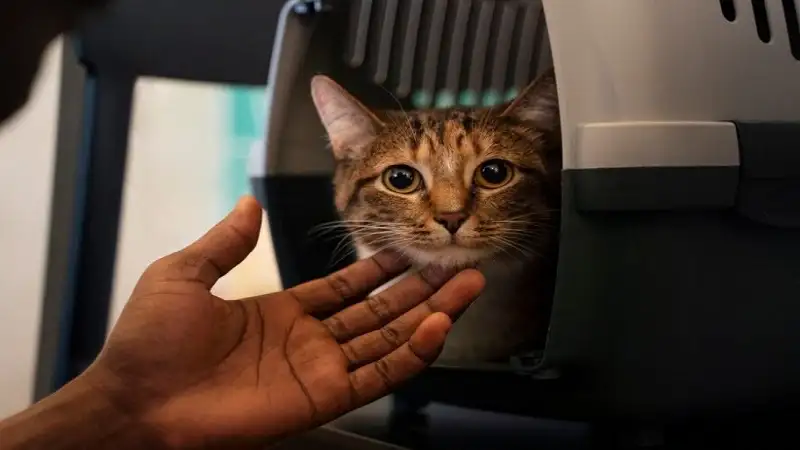Transporting your beloved feline friend can be a stressful experience—for both you and your cat. Whether it’s a trip to the vet, a move to a new home, or a vacation journey, ensuring your cat remains calm and comfortable during transport is essential for their well-being. With some careful planning and simple strategies, you can make traveling with your cat a smoother and more pleasant experience for everyone involved.
Understanding Your Cat’s Anxiety:
Cats are creatures of habit and often become anxious when faced with unfamiliar environments or situations. The prospect of being placed in a carrier, confined in a moving vehicle, and encountering new sights, sounds, and smells can trigger stress responses in many felines. Understanding your cat’s anxiety and taking steps to minimize it is key to ensuring a successful journey.
Choosing the Right Carrier:
The first step in keeping your cat calm during cat transport is selecting the right carrier. Choose a carrier that is spacious enough for your cat to stand up, turn around, and lie down comfortably. Opt for a carrier with good ventilation and secure closures to prevent your cat from escaping. Additionally, consider a carrier with removable top or side panels, which can make it easier to place your cat inside and remove them without causing unnecessary stress.
Familiarizing Your Cat with the Carrier:
Before the day of travel, take time to familiarize your cat with the carrier. Place the carrier in a quiet area of your home and leave it open with a soft blanket or familiar bedding inside. Encourage your cat to explore the carrier at their own pace by placing treats, toys, or catnip inside. Gradually increase the amount of time your cat spends inside the carrier, rewarding them with praise and treats for calm behavior.
Creating a Calming Environment:
On the day of travel, create a calming environment for your cat by keeping noise levels low and minimizing distractions. Play soft music or white noise to mask any unfamiliar sounds from the outside world. Covering the carrier with a towel or blanket can also help to create a sense of security and reduce visual stimuli that may cause anxiety.
Using Pheromone Sprays or Diffusers:
Consider using synthetic pheromone sprays or diffusers designed specifically for cats to help reduce stress and anxiety during transport. These products mimic the natural pheromones that cats produce to mark their territory and can have a calming effect on felines in unfamiliar environments. Simply spray the inside of the carrier or plug in a diffuser in the car before placing your cat inside.
Maintaining a Comfortable Temperature:
Ensure that the temperature inside the carrier remains comfortable for your cat throughout the journey. Avoid placing the carrier in direct sunlight or near sources of heat or cold drafts. If traveling in hot weather, provide adequate ventilation and consider placing a cool gel pad or frozen water bottle wrapped in a towel inside the carrier to help regulate your cat’s body temperature.
Taking Breaks and Offering Comfort:
If traveling long distances, plan regular breaks to allow your cat to stretch their legs, use the litter box, and have a drink of water. When stopping, place the carrier in a quiet, secure area away from traffic and other animals. Offer your cat words of reassurance and gentle strokes to help them feel calm and secure.
Feeding and Hydration:
Avoid feeding your cat a large meal immediately before travel, as this can lead to nausea and discomfort. Instead, offer a small snack or treat a few hours before departure. Provide access to fresh water throughout the journey by attaching a spill-proof water dispenser to the carrier or offering ice cubes for your cat to lick. If traveling for an extended period, offer small amounts of food and water at regular intervals to prevent dehydration and hunger.
Safety First:
Ensure your cat’s safety during transport by securing the carrier with a seatbelt or placing it in a well-ventilated area of the car where it won’t slide or tip over. Never leave your cat unattended in a parked car, especially in hot weather, as temperatures can quickly rise to dangerous levels. If traveling by air, check airline regulations regarding pet carriers and make arrangements in advance to ensure a smooth journey.
Conclusion:
Transporting your cat doesn’t have to be a stressful experience. By understanding your cat’s anxiety, choosing the right carrier, creating a calming environment, and taking steps to ensure their comfort and safety, you can help your feline friend stay calm and comfortable during transport. With a little planning and patience, you can make traveling with your cat a positive experience for both of you.
